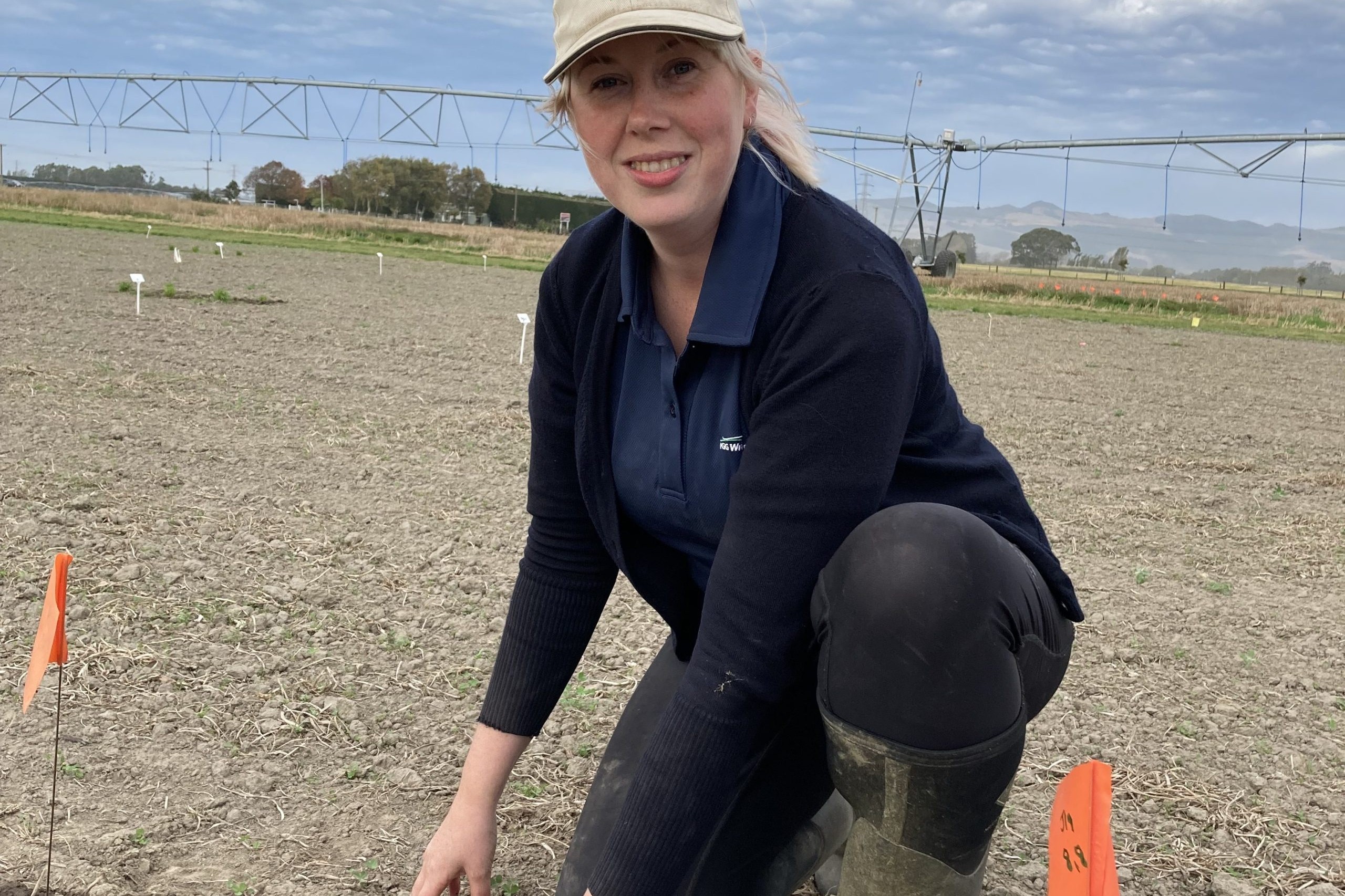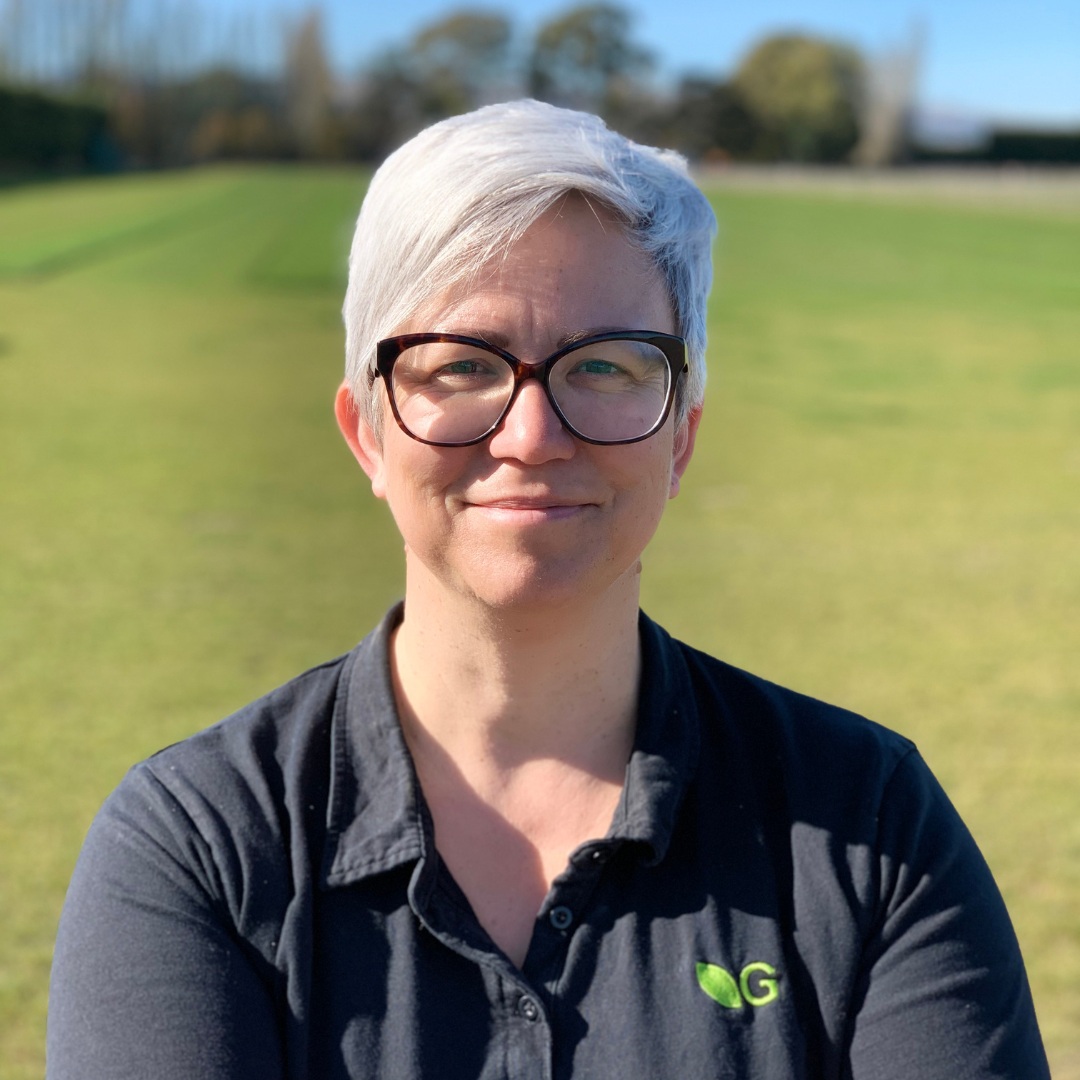Plant breeder keeps eye on future demands
WORDS BY TONY LEGGETT.
Patience and predictive ability are helpful traits for any plant breeder says Justine Ferguson.
To navigate the 10-plus year timeframe to breed a new cultivar and get it to the point of release to the market takes patience, she says. Predicting the traits needed by a new cultivar in 10 or more years also means good plant breeders always have one eye on the future.

Justine is nearing the end of her first decade as a plant breeder after starting her career in 2016 with multi-national company DLF Seeds. Following its merger with PGG Wrightson Seeds three years later, she is now based at the company’s Kimihia farm near Lincoln University south of Christchurch.
She says she enjoys the blend of outdoor, practical work on the research site, and the inside laboratory work.
“I love the science of plant breeding and the responsibility that goes with having a job that has influence over quite a big industry. What you do [in this role] does have an impact on New Zealand.
“Part of our work is just the day-to-day standard plant breeding, but we’re always trying to achieve continuous improvements and looking for the next best thing as well and asking ourselves what’s going to be that stand out product that we need in 10 years?”
Justine says there is constant selection going on, starting with thousands of individual plants but over time that is reduced to just a small number of lines which may deliver one new variety.
“It really is a big funnel of just picking the best out of a large number of plants and…just narrowing it down to get the very best for the traits that we’re aiming for excellence in.
“It’s usually a trade-off, if you’re really good in one trait, you often lose a bit in another trait.”
Every line of seed under test is reviewed regularly on its performance. Yield is still a major consideration in the selection of new cultivars in the programme, but environmental traits are also high priority at present.
Creating cultivars with clever endophyte fungi that enhance the plant’s ability to withstand pests like Black Beetle and mitigate livestock performance limiting challenges like ryegrass staggers are also a focus.
“Black beetle is moving south all the time and becoming more of an issue for farmers now. That’s where endophytes fit in and give the plants resistance to attack from our major insect pests.”
She is a member of the Plant Breeders & Research Association’s Forage Technical Committee as well as the Endophyte Technical Committee.
She says it is exciting to see the relative performance of different plants especially in the early stages of selection. Some plants are obvious standouts.
“We’ve got one that’s just super quick out of the ground and I know from past trials that it continues to grow really well. So yeah, you do have your favourites.”
Harvesting time in early summer is hectic and requires almost painstaking attention to detail. Plants are harvested and bagged individually and details of its location are documented to ensure the accuracy required.
“A lot of what we do in the field is very manual as we do a lot by hand. We’re not going in with the machine.
“As we get later in the trial stage, you might get to harvesting a few hundred grams of seed.”
Clever technologies are helping reduce some of the manual labour required in the field and laboratory.
“For instance, we’re using more biotech tools like genetic markers which allow us to screen large numbers of plants for the few that have the piece of DNA that we’re particularly looking for.”
Drones capable of taking detailed photographs of plants in their trial plots are also used to help record performance traits.
Looking ahead, Justine says she expects the farming sector to look more to the plant breeding sector to help mitigate the impacts of climate change and the associated environmental regulations being introduced by regional councils and governments.
“We’re already breeding plants that can withstand more variation in our climate and contributing to the team looking at endophytes that can deal with different insects, so it’s an exciting time for plant breeders.”
Justine is attending this year’s Women in Seeds forum in Christchurch on May 21. To find out more, visit https://www.nzgsta.co.nz/women-in-seed-forum-2024/




